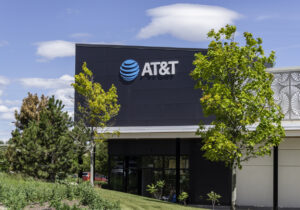How to engage ‘deskless’ workers
If employees don’t work in front of a screen all day, do they see your content? Take these steps to ensure they do.

Emails and newsletters, hour-long broadcasts and intranet articles: Most digital content is designed for employees working in front of screens at desks.
But as the pandemic reminded us, many employees perform essential duties out in the world. How do you reach these workers who are tethered neither to screens nor ergonomic swivel chairs? Jim Ylisela, co-founder and senior partner of Ragan Consulting Group, provides strategies—caveats included.
Clients say the wisest things…
A hospital CEO recently remarked that the internal communications function is designed for employees in front of computers – that is to say, employees whose lifestyles mirror the communications team’s very routines.
“It was so wise, so prescient,” says Ylisela, recalling the meeting. “And sometimes those aren’t the most important people to be communicating with. But it’s set up that way. We’re doing intranets, email, e-newsletters, videos – that is all geared to people who can access it … but it often leaves out the people who are the most important to reach.”
For example, doctors and nurses are responsible for providing urgent patient care. As such, their shifts keep them focused on people, not corporate email on a laptop.
“Nurses working 12-hour shifts, a factory worker, or a lineman working for a utility company – these people are not in a good position to receive and act on our content, no matter how good it is,” Ylisela says. “We work so hard on developing good channels and good content, but it’s only as good as the people can get it.”
Are phones the answer?
Regardless of job function, the one device uniting all employees is the mobile phone.
“It’s the only communication channel you can truly count on,” Ylisela says. “There’s your access problem, solved, right there.”
At least theoretically. Many companies prohibit workers from using their phones while on the job.
Ylisela says it’s outdated to think a nurse will ignore a patient to check Facebook. “It’s something we’re just going to have to get over, just as we got over email,” he says. “Companies were against email because they thought people would waste time by emailing their friends.”
At the same time, unions often say they don’t want their members to use their personal phones as work devices unless the company is reimbursing them. “My feeling is ‘work it out,’” Ylisela says. “These are not insurmountable obstacles.”
Corporate apps providing employees “bite-size” content are emerging as an effective way to reach employees because they’re narrowly focused and controllable.
“This is the first crack in the armor on phones,” Ylisela says. “There are also tremendous costs to building the app, but we’ll get past all of that just like we got past the other technologies.”
Should deskless workers be given tablets?
Some organizations are investing in iPads or tablets for, say, utility workers or salespeople who have downtime between client visits. “But part of the issue is that dreaded firewall,” Ylisela says, noting that some companies don’t want employees to use the internet unless they’re on campus. “But people really need the access when they’re in the middle of nowhere.”
What role do managers play?
Business unit and departmental managers have an important role to play in cascading corporate messages to employees, but the comms team must provide practical information.
“Anybody who works in a factory or a production plant, or out in the field somewhere, turns to their supervisors when they need to know stuff,” Ylisela says. “But manager communications is very inconsistent at best. I’ve talked to a lot of CEOs about this and asked them how it’s going. They don’t know because there’s no accountability.”
Communicators should follow the rule of three to streamline the spread of daily updates:
- Write a bulleted document for managers to use during meetings, and post it on a managers-only section of the intranet.
- Cover three topics, such as the company’s strategic direction or some other “big picture” item; an operations update specific to that department; and something of personal interest to employees, such as benefits or perks.
- Provide more details on the intranet, for everyone to see.
“Keep it short, keep it simple, and convey it during team huddles or group meetings,” Ylisela says. “But it’s not like, ‘Hey, listen, we have a new plan, and here’s the 50-slide PowerPoint. No one’s going to look at that.”
The leader visits
Sometimes the most effective communications channel is a handshake.
Employees rely on their managers for knowing what to do and how to do it, but they rely on the business unit head or CEO to understand the “why” behind decisions.
“They want the big picture, they want inspiration,” Ylisela says.
Let’s say you do communications at a company with a factory running three different shifts. Your CEO should accommodate the workers’ schedules.
“Have the town hall meeting three times at three different shifts, be it 11 o’clock at night or 7 a.m., so you can touch on everyone,” Ylisela says. “When the boss shows up and talks to people directly, it has an overwhelmingly positive effect. It’s a fact that the person showed up.”
If you have multiple locations, create two-minute CEO videos that can be distributed easily, such as:
- During in-person meetings, when managers can provide additional context.
- On monitors in break rooms.
- On workers’ cell phones or tablets.
“During the worst of the pandemic, a lot of leaders recorded videos from their homes to everyone else – those things were monster hits,” Ylisela says. “The leader was home just like they were at home, or out in the field ‘because we’re essential.’ They want connection to their leaders.”
Reading the paper
In the digital age, print still has a place, whether it’s cheeky or family-friendly.
For example, a credit union has had significant success with “Toilet Paper,” a one-page, double-sided newsletter placed in bathroom stalls.
“It doesn’t have to be a fancy newsletter,” Ylisela says. “Every day or once a week, everybody gets two pages front and back that talk about the things they need to do or need to know.”
And sometimes mailing publications to workers’ homes is the best way to generate attention. In fact, a utility company is working with Ragan Consulting Group to create a print magazine.
“They send it home and who reads it? The spouse reads it,” Ylisela says. “It has a lot of benefits information, and oftentimes the spouse makes the decisions. It also goes to retirees who like to see what the company is doing. It’s a great way to celebrate the organization.”
The utility company didn’t buck the digital trend on a whim; the comms team did their research.
“Ways to reach deskless workers range from the highest high-tech ways to the least techie ways,” Ylisela says. “They’re all kind of useful. You’ve got to find out how they like to get information.”
RCG specializes in corporate communications training, consulting and strategic counsel. Schedule a call with Kristin Hart to learn how we can help you improve your comms plan for deskless workers. Follow RCG on LinkedIn here and subscribe to our weekly newsletter here.






